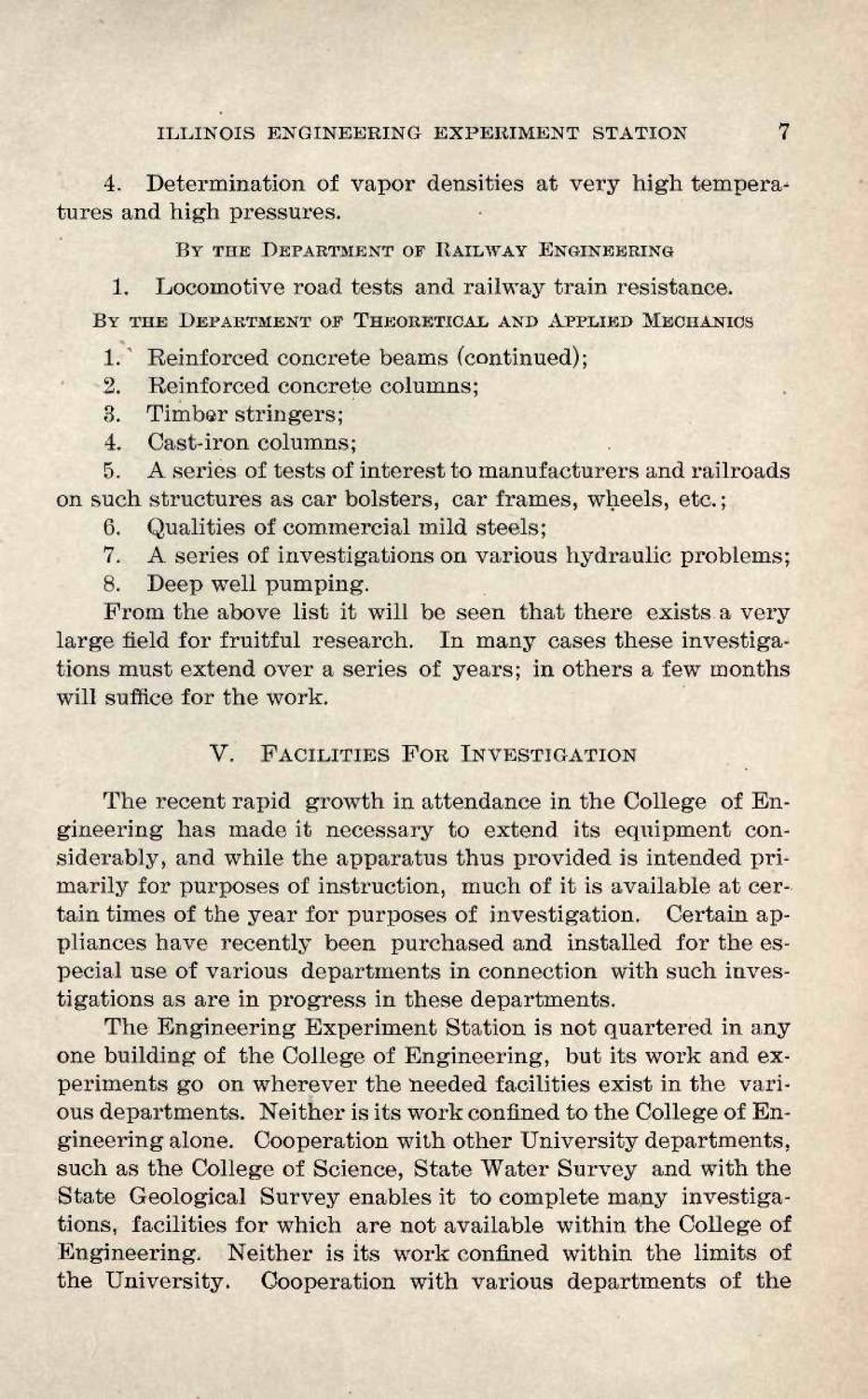Caption: Book - First Years of Engineering Experiment Station (1906)
This is a reduced-resolution page image for fast online browsing.

EXTRACTED TEXT FROM PAGE:
ILLINOIS ENGINEERING EXPERIMENT STATION 7 4. Determination of vapor densities at very high tempera^ tures and high pressures. B Y THE D E P A R T M E N T OF RAILWAY E N G I N E E R I N G 1. Locomotive road tests and railway train resistance. B Y THE D E P A R T M E N T OF THEORETICAL AND A P P L I E D MECHANICS 1. * Reinforced concrete beams (continued); 2. Reinforced concrete columns; 3. Timber stringers; 4. Cast-iron columns; 5. A series of tests of interest to manufacturers and railroads on such structures as car bolsters, car frames, wheels, etc.; 6. Qualities of commercial mild steels; 7. A series of investigations on various hydraulic problems; 8. Deep well pumping. F r o m the above list it will be seen that there exists a very large field for fruitful research. In many cases these investigations must extend over a series of years; in others a few months will suffice for the work. V. FACILITIES FOR INVESTIGATION The recent rapid growth in attendance in the College of Engineering has made it necessary to extend its equipment considerably, and while the apparatus thus provided is intended primarily for purposes of instruction, much of it is available at certain times of the year for purposes of investigation. Certain appliances have recently been purchased and installed for the especial use of various departments in connection with such investigations as are in progress in these departments. The Engineering Experiment Station is not quartered in any one building of the College of Engineering, but its work and experiments go on wherever the needed facilities exist in t h e various departments. Neither is its work confined to the College of Engineering alone. Cooperation with other University departments, such as the College of Science, State Water Survey and with the State Geological Survey enables it to complete many investigations, facilities for which are not available within the College of Engineering. Neither is its work confined within the limits of the University. Cooperation with various departments of the
|